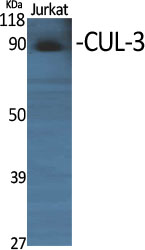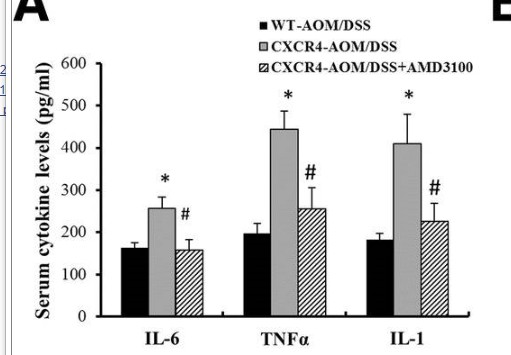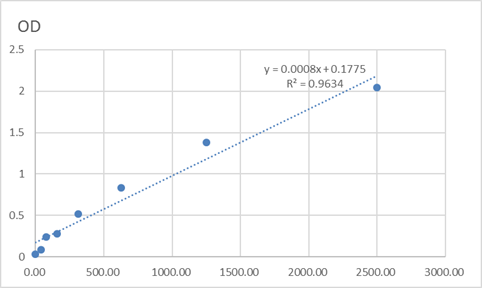
Catalog: KA3235C
Size
Price
Status
Qty.
96well
$330.00
In stock
0
Add to cart


Collected


Collect
Main Information
Reactivity
Human, Mouse
Applications
ELISA
Conjugate/Modification
Unmodified
Detailed Information
Storage
2-8°C/6 months,Ship by ice bag
Modification
Unmodified
Detection Method
Colorimetric
Related Products
Antigen&Target Information
Gene Name:
CUL3
show all
Protein Name:
Cullin-3
show all
Other Name:
CUL3 ;
KIAA0617 ;
Cullin-3 ;
CUL-3
KIAA0617 ;
Cullin-3 ;
CUL-3
show all
Background:
function:Core component of multiple cullin-RING-based BCR (BTB-CUL3-RBX1) E3 ubiquitin-protein ligase complexes which mediate the ubiquitination and subsequent proteasomal degradation of target proteins. As a scaffold protein may contribute to catalysis through positioning of the substrate and the ubiquitin-conjugating enzyme. The E3 ubiquitin-protein ligase activity of the complex is dependent on the neddylation of the cullin subunit and is inhibited by the association of the deneddylated cullin subunit with TIP120A/CAND1 (By similarity). The functional specificity of the BCR complex depends on the BTB domain-containing protein as the susbstrate recognition component. BCR(SPOP) is involved in ubiquitination of BMI1/PCGF4, H2AFY and DAXX, and probably GLI2 or GLI3. BCR(KLHL9-KLHL13) controls the dynamic behavior of AURKB on mitotic chromosomes and thereby coordinates faithful mitotic progression and completion of cytokinesis. Involved in ubiquitination of cyclin E and of cyclin D1 (in vitro) thus involved in regulation of G1/S transition.,pathway:Protein modification; protein ubiquitination.,PTM:Neddylated. Attachment of NEDD8 is required for the E3 ubiquitin-protein ligase activity of the BCR complex. Deneddylated via its interaction with the COP9 signalosome (CSN) complex.,similarity:Belongs to the cullin family.,subunit:Forms neddylation-dependent homodimers. Component of multiple BCR (BTB-CUL3-RBX1) E3 ubiquitin-protein ligase complexes formed of CUL3, RBX1 and a variable BTB domain-containing protein acting as both, adapter to cullin and substrate recognition subunit. The BCR complex may be active as a heterodimeric complex, in which NEDD8, covalently attached to one CUL3 molecule, binds to the C-terminus of a second CUL3 molecule. Interacts with RBX1, RNF7, CYCE and TIP120A/CAND1. Part of the BCR(SPOP) containing SPOP. Part of the probable BCR(KLHL9-KLHL13) complex with BTB domain proteins KLHL9 and KLHL13. Part of the BCR(KBTBD10) complex containing KBTBD10. Part of the BCR(ENC1) complex containing ENC1. Part of a complex consisting of BMI1/PCGF4, CUL3 and SPOP. Part of a complex consisting of H2AFY, CUL3 and SPOP. Interacts with KLHL9, KLHL13, GAN, ZBTB16, KLHL21, KLHL3, KLHL15, KLHL20, C16orf44, GMCL1L, BTBD1. Part of a complex that contains CUL3, RBX1 and GAN.,tissue specificity:Widely expressed.,
show all
Function:
G1/S transition of mitotic cell cycle, mitotic cell cycle, cell morphogenesis, cell morphogenesis involved in differentiation,in utero embryonic development, blastocyst development, blastocyst formation, trophectodermal cell differentiation,trophectodermal cellular morphogenesis, proteolysis, ubiquitin-dependent protein catabolic process, induction of apoptosis, cell cycle, cell cycle arrest, gastrulation, cyclin catabolic process, positive regulation of cell proliferation,induction of apoptosis by intracellular signals, macromolecule catabolic process, embryonic development ending in birth or egg hatching, proteasomal protein catabolic process, regulation of cell death, positive regulation of cell death,induction of programmed cell death, modification-dependent protein catabolic process, cell cycle process, cell cycle phase, protein catabolic process, cellular component morphogenesis, regulation of cell proliferation, regulation of apoptosis, chordate embryonic development, positive regulation of apoptosis, regulation of programmed cell death,positive regulation of programmed cell death, proteasomal ubiquitin-dependent protein catabolic process,modification-dependent macromolecule catabolic process, cellular protein catabolic process, cellular macromolecule catabolic process, embryonic morphogenesis, interphase, interphase of mitotic cell cycle, proteolysis involved in cellular protein catabolic process,
show all
Cellular Localization:
Nucleus . Golgi apparatus . Cell projection, cilium, flagellum . Cytoplasm, cytoskeleton, spindle . Cytoplasm. Cytoplasm, cytoskeleton, microtubule organizing center, centrosome . Cytoplasm, cytoskeleton, spindle pole . Detected along the length of the sperm flagellum and in the cytoplasm of the germ cells (PubMed:28395323). Predominantly found in the nucleus in interphase cells, found at the centrosome at late G2 or prophase, starts accumulating at the spindle poles in prometaphase and stays on the spindle poles and the mitotic spindle at metaphase (PubMed:23213400). .
show all
Tissue Expression:
Signaling Pathway
Reference Citation({{totalcount}})
Catalog: KA3235C
Size
Price
Status
Qty.
96well
$330.00
In stock
0
Add to cart


Collected


Collect
Recently Viewed Products
Clear allPRODUCTS
CUSTOMIZED
ABOUT US
Toggle night Mode
{{pinfoXq.title || ''}}
Catalog: {{pinfoXq.catalog || ''}}
Filter:
All
{{item.name}}
{{pinfo.title}}
-{{pinfo.catalog}}
Main Information
Target
{{pinfo.target}}
Reactivity
{{pinfo.react}}
Applications
{{pinfo.applicat}}
Conjugate/Modification
{{pinfo.coupling}}/{{pinfo.modific}}
MW (kDa)
{{pinfo.mwcalc}}
Host Species
{{pinfo.hostspec}}
Isotype
{{pinfo.isotype}}
Product {{index}}/{{pcount}}
Prev
Next
{{pvTitle}}
Scroll wheel zooms the picture
{{pvDescr}}



















